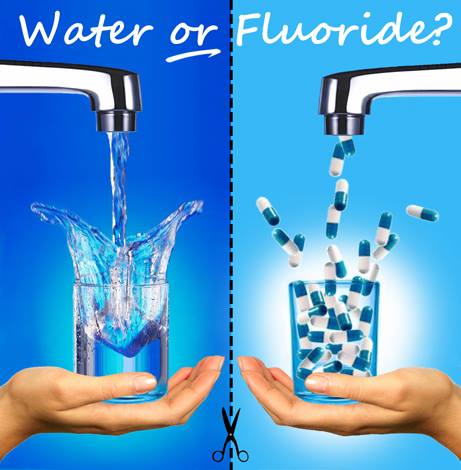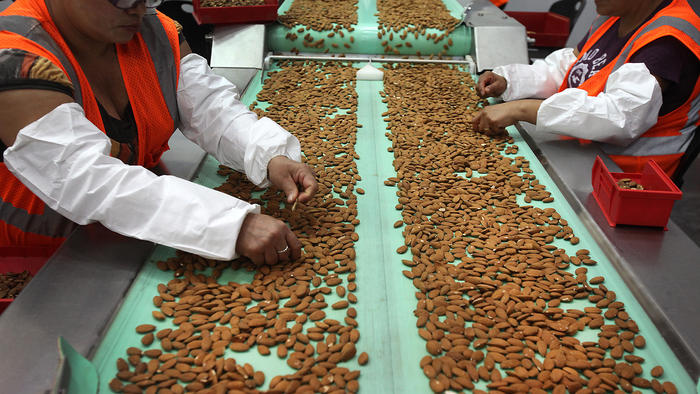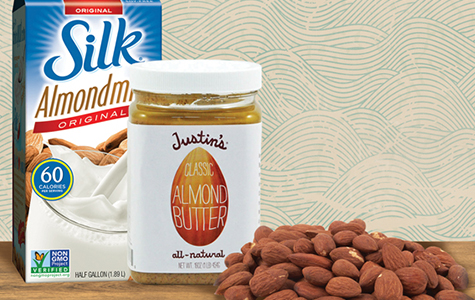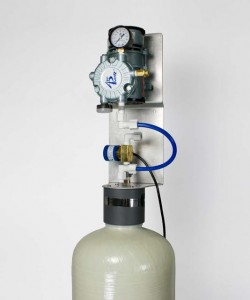Can Drinking Alkaline Water Keep You Extra-Hydrated And Disease-Free?
by Molly Shea, Assistant Editor, Yahoo Health
Can Trendy Alkaline Water Cure What Ails You?
Gazette Introductory Note: This piece calmly dismisses the basic assumption of sellers of the products called “alkalizers” or “ionizers” that the human body needs large amounts of very alkaline water to maintain its health. The key idea is expressed in the statement that the body does quite well at maintaining water’s pH balance. It has been doing this for eons without the help of radically treated water or the $2000 machines being sold to produce it. The fact is that the body must have water at a very specific pH level and it has perfected the way of achieving that level quite without the help of special bottled water or costly electronic gadgets. Truth is, the pH level of the water we drink seems to have no effect at all on the body’s ability to get the pH of the water it uses exactly right.–Hardly Waite.
Water is nature’s perfect beverage. Hydrating, calorie-free, and readily available, the simple drink is as good as it gets for ensuring proper functioning of all your body’s organs. But what if there was a different water, an even more hydrating liquid that goes farther to keep you healthy and thriving?
That’s the premise behind alkaline water, a version of H2O with a pH level higher than 7. (A pH above 7 is considered alkaline, while a pH lower than 7 is acidic — normal water typically has a pH of 7).The thinking is this: Maintaining a bodily pH level of 7.4 is key to optimum health. Because so many foods in the modern diet are considered acidic, drinking water with a higher pH than normal can help your body stay alkaline and disease-free, improving all aspects of health. Proponents call it a better form of hydration, and some drink alkaline water exclusively.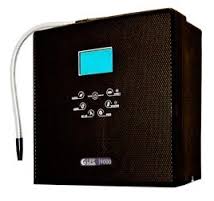
The water comes in two forms: “natural” alkaline water, gathered from areas like Hawaii’s volcanic regions, or “artificial” alkaline water, which is ionized by a machine or made by adding an alkalizing salt to normal water.
Where The Trend Began:
While water with extra benefits has been revered for ages, the specialty bottled water industry has boomed in just recent years. “People are drawn to something that impacts the body’s pH [levels]. Whether it’s placebo or fact, people feel that drinking alkaline water will help them get healthier,” says Richard Medina Jr., co-founder of L.A. Distributing Company, a New Age snack and beverage distributor. Even Mark Wahlberg and Puff Daddy got into the game in 2013 co-founding “Aqua Hydrate,” a brand of alkaline water that they tout as a natural hangover cure.
But for all its celebrity sparkle and dramatic claims, can drinking alkaline water actually make you any healthier?
What The Science Says:
As alluring as it sounds, the answer is no, says Stanley Goldfarb, MD, hydration expert and professor at the Hospital of the University of Pennsylvania. “If you drink a lot of alkaline water, all you’re going to do is pee out a huge amount of alkaline material. There really is no rationale for this,” Goldfarb explains. Yes, maintaining the right pH balance is important, but your body does that on its own — no fancy water required.
“What people need to appreciate is that the body is designed to maintain its equilibrium in the face of whatever you take in,” Goldfarb explains. “We are designed to maintain the pH of our bodies in an extraordinarily specific range. We have so many defense mechanisms to prevent an accumulation of alkaline that drinking alkaline water will have little effect.”
As for claims that alkaline water can hydrate better than normal water, delivering vitamins and minerals to your body more rapidly and efficiently — those just don’t hold up. There are no studies that prove that drinking alkaline water is any more hydrating than your average tap, filtered, or bottled water, and any claims that it does so fly in the face of hydration research, says Goldfarb. “When it comes to… whether you’re taking in acid or alkaline, it really makes no difference,” he says.
But as much as alkaline water’s benefits have likely been overblown, so too have any potential side effects. Some warn against drinking too much alkaline water, for fear that it could lead to alkalosis — when your body’s pH level is too high, causing confusion, headaches, vomiting and more. According to Goldfarb, there’s very little chance that drinking alkaline water, even if you’re drinking it exclusively, could lead to any internal issues. “It’s not to say that you can’t overwhelm your system, but it’s rare.” That said, says Goldfarb, “if you have a disease, the answer changes, so I’m hesitant to say oh, no, drink what you want, [but in general] it won’t make a difference.”
As for whether water that’s naturally alkaline is any better than water that’s artificially alkalized, Goldfarb doesn’t see the evidence. “There’s no difference between natural and unnatural alkaline—it really doesn’t matter.”
The Verdict:
There are some situations where the pH level of the water you consume does impact your health, Goldfarb explains. “For example, [for] some people who have kidney disease, their bodies cannot rid themselves of acid as quickly as others. If you’re prone to kidney stones, then acidity might be a problem.” A study did suggest that drinking water with a pH of 8.8 (which is more alkaline) can help relieve symptoms of acid reflux, when it’s done as part of a doctor-approved treatment plan. Those exceptions aside, swilling alkaline water won’t make much of a difference.
If you love the taste of a certain water and have some extra money to blow, spending it on pricey aqua isn’t the worst thing you could do. Just turn a wary eye to health claims and don’t expect any magic.
Source: Yahoo Health.
Pure Water Gazette Fair Use Statement
![pwanniemedium[1]](http://www.purewatergazette.net/blog/wp-content/uploads/2012/05/pwanniemedium1.jpg) What Are Chlorine Burns?
What Are Chlorine Burns?



